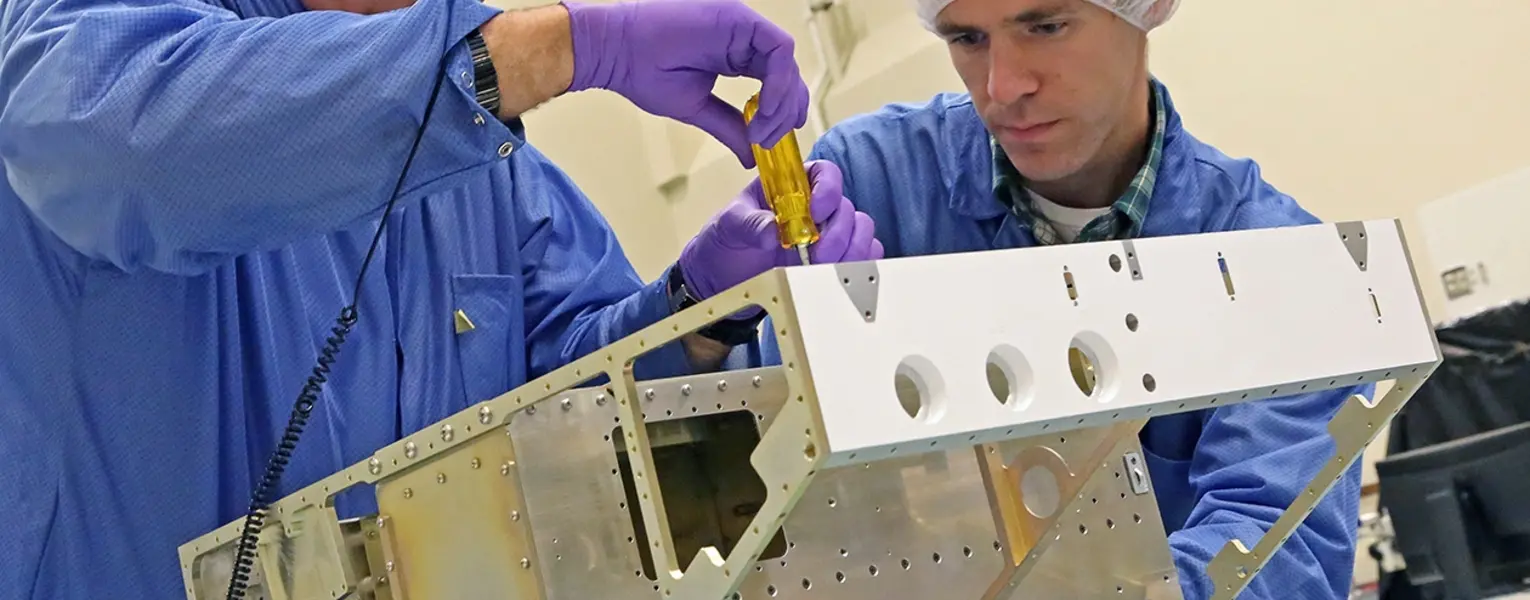SwRI has over four decades of experience in supporting space missions and operations, including the design and development of spacecraft. In recent years, we have advanced our capabilities to include spacecraft subsystem assembly, design and analysis, and integration and testing.
Services & Capabilities
- Design and Analysis
- Systems Engineering
- Integration and Test
- Orbital Mechanics
- Project Management
- Harnessing
Cyclone Global Navigation Satellite System (CYGNSS)
Between 2015 and 2016, SwRI designed, analyzed, fabricated, and integrated NASA's Cyclone Global Navigation Satellite System (CYGNSS) at our campus in San Antonio, Texas. Launched in December 2016, CYGNSS is a constellation of eight microsatellites designed to collect data based on GPS satellite signals to measure wind speeds and hurricane intensification.
SwRI integrated multiple components and subsystems for each of the eight microsatellites. After assembling the microsatellites, our team inspected interfaces and tested subsystems. Testing and evaluation include environmental testing, and electromagnetic compatibility and interference. We also tested the units in a large thermal vacuum chamber at the SwRI campus.
Contact us to find out more about spacecraft assembly, integration and testing services.
CubeSat to study Solar Particles (CuSP)
The CubeSat to study Solar Particles (CuSP) is one of a dozen shoebox-size payloads, called CubeSats, that will hitchhike into interplanetary space aboard EM-1, the first unmanned test flight of NASA’s giant new Space Launch System (SLS). The SLS rocket is designed to eventually carry astronauts to the Moon and Mars aboard the Orion spacecraft.
CuSP will study Solar Particles in interplanetary space, be a Pathfinder for creating a network of “Space Weather Stations”, strengthen the case for CubeSats as a viable platform for performing ‘High Value’ Science, raise the TRL of the SIS instrument for future missions
CuSP Quick Facts:
- First SwRI CubeSat mission
- 6U CubeSat 30 cm x 20 cm x 10 cm (plus a little)
- Deployed 30 cm x 80 cm (solar arrays) x 30 cm (antenna/boom)
- Less than 14 kg
- Trans-lunar, heliocentric orbit at 1AU
- 3-axis Stable, Sun Pointing Spacecraft
- Launch vehicle: SLS EM-1 secondary payload
- 3+ month duration (bandwidth limited)
- Science Payload:
- SIS – Suprathermal Ion Spectrograph 3-70 keV/q
- VHM – Vector Helium Magnetometer
- MERiT – Miniaturized Electron and pRoton Telescope 2-150 MeV/q

